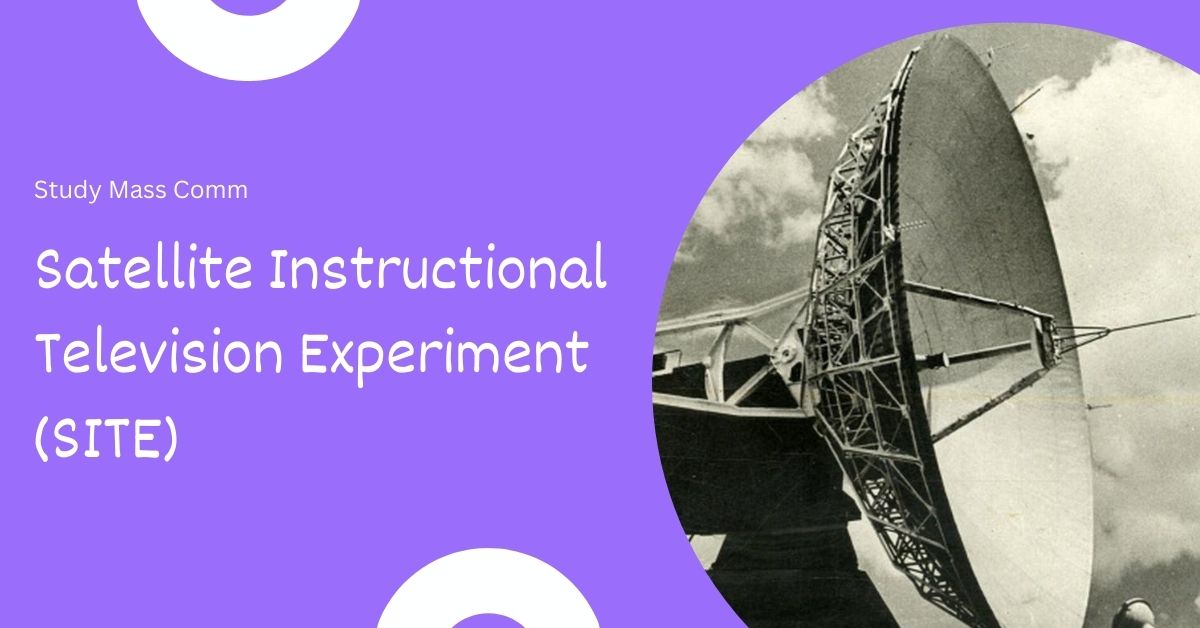In 1967, the UNESCO expert mission along with the Government of India undertook a study on the use of satellite for National Development in India. Based on the favorable recommendation, the Satellite Instructional Television Experiment (SITE) was launched as an experimental satellite communications project in 1975, designed jointly by NASA and the Indian Space Research Organization (ISRO) and was supported by various International agencies such as the UNDP, UNESCO, UNICEF, and ITU.
Purpose and Objectives
The main purpose of introducing satellite communication was to disseminate information to the people of India on various important issues and to provide technical experience in the field of satellite communications.
The major objectives of Satellite Instructional Television Experiment (SITE) were:
- Development and Management: To gain experience in the development, testing, and management of a satellite-based instructional television system, especially in rural areas, and to determine the optimal system parameters.
- Mass Communication: To demonstrate the potential value of satellite technology in the rapid development of effective mass communications in developing countries.
- Village Instruction: To show the potential value of satellite broadcast TV in providing practical instruction to village inhabitants.
- National Development: To stimulate national development in India, with significant managerial, economic, technological, and social implications.
Implementation and Coverage
The Satellite Instructional Television Experiment (SITE) experiment ran from August 1, 1975, to July 31, 1976, covering over 2,400 villages across 20 districts in six Indian states and territories. The programs were broadcasted via NASA’s ATS-6 satellite, stationed above India, and produced by Doordarshan, a part of All India Radio. These programs were broadcasted twice daily: in the morning for school children and in the evening for general village audiences. Morning broadcasts lasted for 1.5 hours, while evening broadcasts were 2.5 hours, including a common half-hour program in Hindi developed in Delhi.
- Duration: August 1st, 1975 – July 31st, 1976
- Coverage: Over 2400 villages in 20 districts across 6 Indian states
- Technology: NASA’s ATS-6 satellite, programs produced by Doordarshan (part of All India Radio)
- Broadcast Schedule: Twice daily – Morning (1.5 hours) for school children, Evening (2.5 hours) for general audience
For further reading on similar initiatives, check out our detailed article on the Kheda Communication Project.
Impact and Outcomes
Technical Expertise: The project provided valuable training and experience for hundreds of Indian engineers, technicians, and other professionals involved in satellite communication. It showcased the significant role of satellite TV in providing education and information to the masses, influencing similar experiments in other countries.
Educational Impact: The instructional programs were more popular than socio-cultural ones. Programs on health and hygiene, political awareness, modernity, and family planning were well-received. In agriculture, farmers adopted new practices that did not require additional expenses. Children improved their language skills and gained knowledge from sources beyond conventional classroom teaching.
Social and Economic Impact: Television viewing led to improved living standards and modernity among the people. The programs helped in better skill and knowledge development for the general public, including school and adult education, and teacher training. It also improved general health and hygiene awareness.
Conclusion
The primary objectives of SITE were to educate the public on family planning, agricultural practices, and national integration. The experiment aimed to impart better skills and knowledge development, improve general health and hygiene, and train teachers. It also focused on the technical aspects of broadcast and reception facilities and television program material, thereby gaining proficiency in these areas. Overall, the Satellite Instructional Television Experiment significantly contributed to India’s research and development capabilities in satellite communication and mass education.



